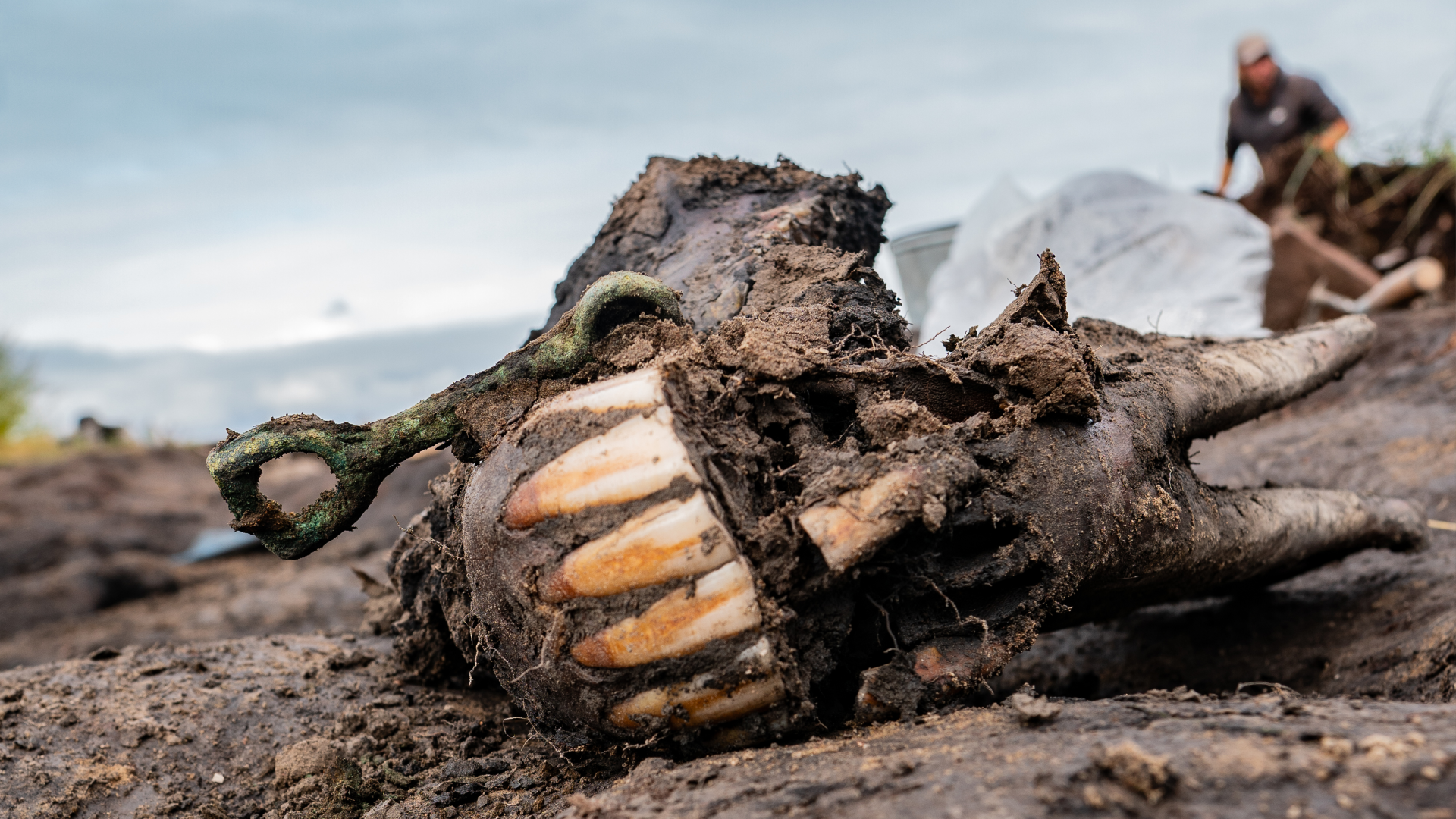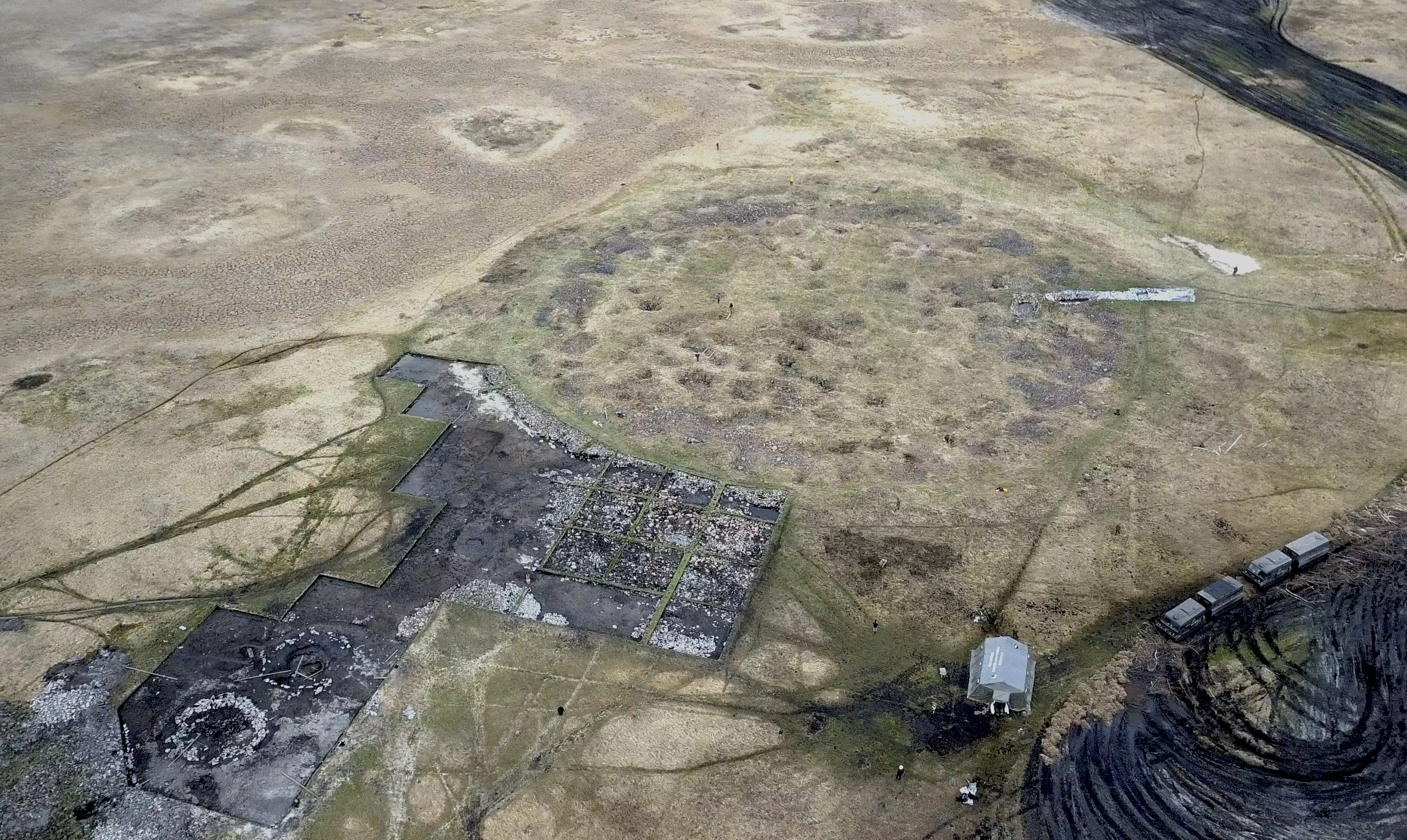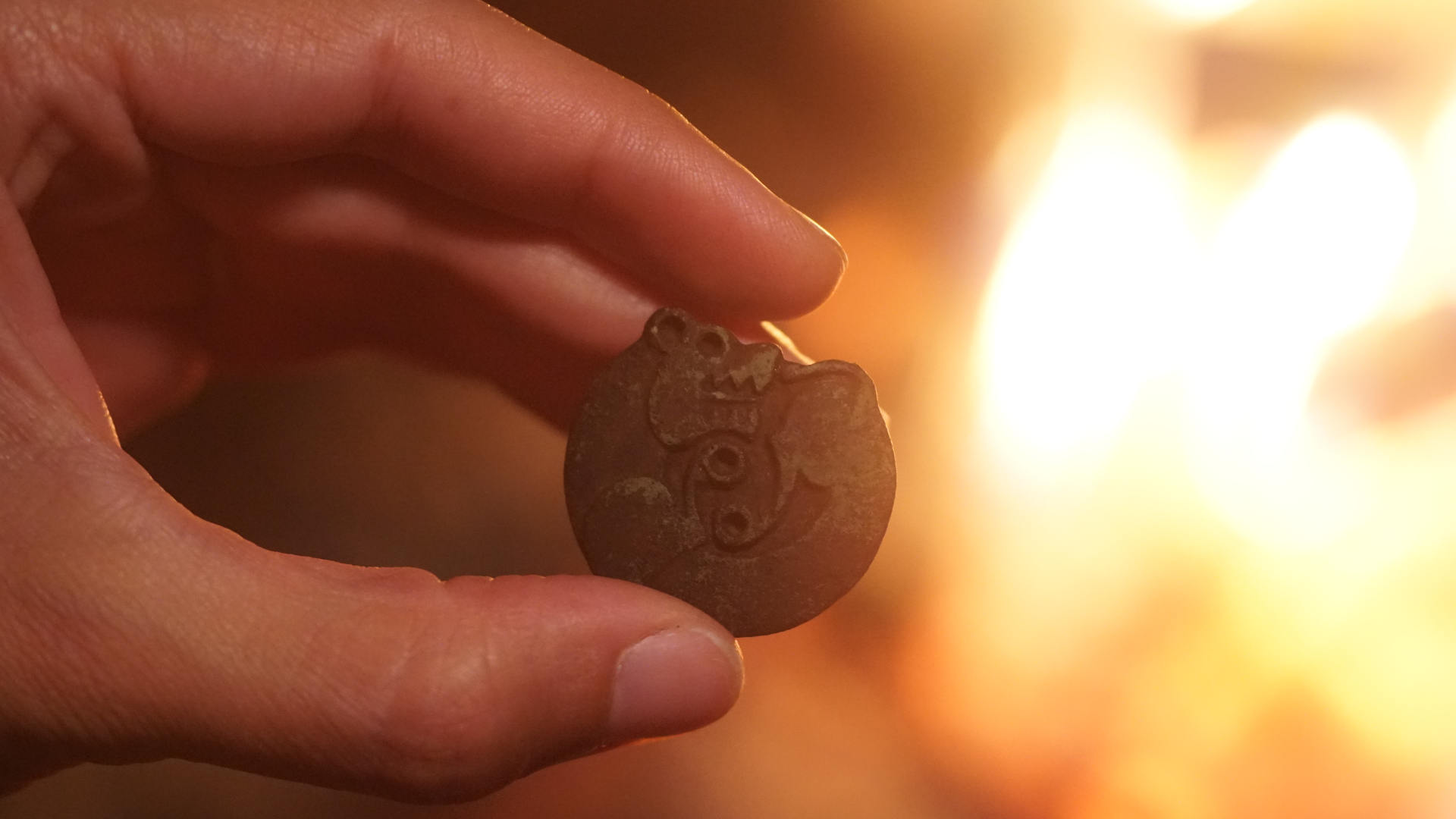
A 2,800-year-old burial in Siberia that contains the remains of an elite individual, who was buried with at least one sacrificed human and dozens of sacrificed horses, appears to belong to a culture closely related to the enigmatic Scythians, a new study finds.
The kurgan, or large burial mound, was unearthed in Tuva, a republic in southern Siberia. It dates to the transition between the Bronze and Iron ages, and it's one of the earliest known of its kind to show Scythian burial practices, according to the study, published online Oct. 8 and later in the December issue of the journal Antiquity.
An excavation of the kurgan revealed horse-riding gear and artifacts decorated with animals, indicating that the elite person's culture was similar to that of the Scythians, who later lived thousands of miles to the west, the researchers wrote in the study. Some of the horse skeletons still had brass bits lodged between their teeth; the remains of a woman were also found, they noted.
"The tomb Tunnug 1 is an elite burial of the highest order," study coauthor Gino Caspari, an archaeologist at the Max Planck Institute of Geoanthropology, told Live Science in an email. "Our paper mentions 18 horses; however, in the meantime we have uncovered dozens more."
Related: 1,800-year-old silver amulet could rewrite history of Christianity in the early Roman Empire
Digging up bones in Siberia
To unearth evidence of the Scythians' beginnings, archaeologists began excavating the easternmost Scythian-like kurgan ever found, which is located in a valley containing thousands of other burial mounds, known as the "Siberian Valley of the Kings."
Through radiocarbon dating, the team dated the mound to the late ninth century B.C., making it one of the oldest known burial mounds to show evidence of Scythian burial practices. So the burial could mark the start of a tradition that lasted centuries.
Although the Scythians had a vibrant culture that included horse rearing, art featuring animals and ritual sacrifice, they left behind no written records of themselves. Instead, their legacy has been defined primarily by people who encountered them, such as the Greek historian Herodotus (circa 484 to 420 B.C.), who wrote about their elaborate sacrificial burial rituals for the "Scythian royalty" in the fifth century B.C.

According to Herodotus, the Scythians would sacrifice dozens of horses and servants to honor the death of a Scythian king. Once killed, the horses would be gutted and stuffed, and then both the sacrificed humans and horses would be propped up with wood to appear as if they were going around the burial mound as a kind of "spectral cavalcade."
"The human remains very likely all belong to the sacrificed people," Caspari explained, as "the elite individuals honored with this ritual are interred inside the mound and not on the surface."

In Scythian culture, the sacrificed victims likely served as guardians or servants of the elite person in the afterlife, according to Herodotus. However, since the bones were fragmented, the researchers could not identify any trauma that could reveal how the victims died.
According to the researchers' analysis of the horse skeletons, though, the Scythians did not necessarily choose the finest horses for sacrifice.
"Most horses were between nine and 15 years of age," Caspari said, and three may have even been older than 20. "This means most horses were mature and they likely didn't sacrifice the best horses of the herds."
Unfortunately, the researchers wrote in their study, exactly how these "spectral riders" were arranged around the kurgan is unclear because the wood and bones degraded long ago, likely because the spectacle was open to the air when it was performed three millennia ago. But since the researchers are continuing their work at Tunnug 1, more clues to this ancient ritual may yet be found.
Editor's note: This story was originally published on Oct. 7 and updated on Dec. 19, when the study was published in the December issue of Antiquity. The updated story includes new images, quotes and information about the skeletons and their ritual meaning.







